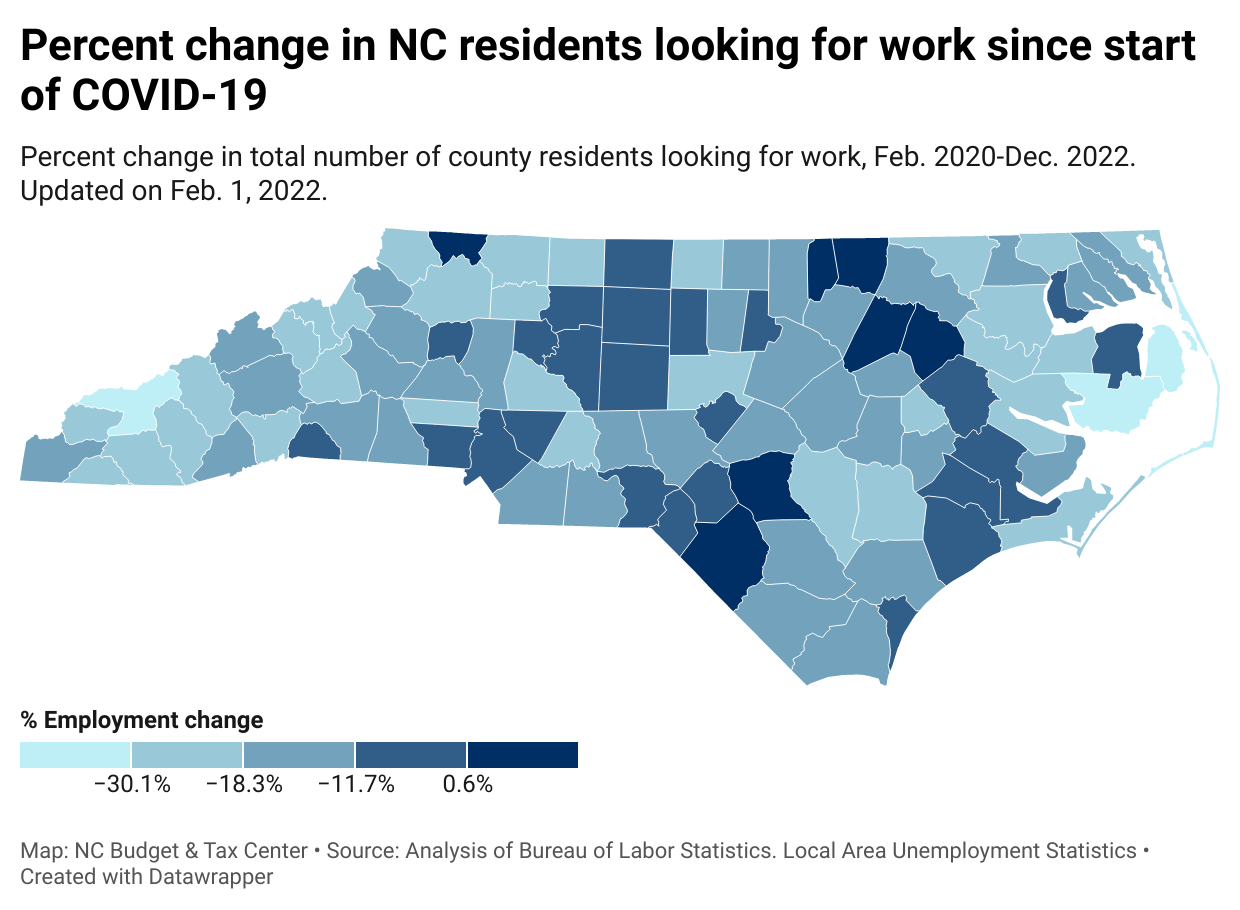
Late 2022 job growth in NC concentrated in metro areas, while many counties still facing challenges
It is the really rather good times, and it is the quite alarmingly hard times.
OK, maybe that lacks Dickens’ punchiness, but it’s the reality facing North Carolina as our elected leaders congregate in Raleigh for the 2023 legislative session. The last jobs report for 2022 just came out, and it shows a state headed in several different directions — some encouraging, some demanding funding for the infrastructure of opportunity.
Thus far we haven’t seen much of a plan from the folks in charge at the General Assembly about what to do for people and communities that have not recovered from the economic fallout of COVID-19. We’ve heard about more tax cuts, but that approach already failed to heal the damage from the Great Recession, so there’s no reason to expect it to be the right treatment this time around. With federal aid drying up, the challenge facing our elected leaders is what to do for the communities that have not seen their share of the recovery to date.
So, let’s take stock of what the last jobs report for 2022 says about the landscape of opportunity in North Carolina.
The good news is that job growth continued throughout last year, even amid market turbulence and concerns about a possible recession. North Carolina added just over 190,000 jobs in 2022, pushing statewide employment 226,000 jobs over pre-COVID levels.
It was also heartening to see significant employment gains across a range of industries. Some service sectors that had been slow to recover finally registered sustained and robust growth last year. We also continued to see gains in white-collar jobs, even as many tech titans trimmed their workforces in recent months. That adds up to job growth at both the top and bottom of the income spectrum as Professional and Business services (which tends to pay better wages) added over 47,000 jobs, while Leisure and Hospitality (which pays some of the lowest wages) added 46,000 jobs.
Those statewide numbers are a testament to the power of federal aid to speed our recovery from COVID-19, and the vibrancy of some of North Carolina’s leading labor markets, but they definitely don’t tell the whole story.
Job growth in North Carolina is heavily concentrated in a few major metropolitan areas.
North Carolina’s metropolitan cities accounted for three-quarters* of the net jobs added in the past year and nearly 70 percent* of the job growth since the start of COVID-19, so this has been a decidedly urban recovery.
But there’s a divide even among our state’s larger cities. The Triangle and Charlotte added over 110,000 jobs in 2022, which is nearly 60 percent* of the net job growth for all of last year. By comparison, no other metropolitan area managed to add even 10,000 jobs, and three cities (Goldsboro, Greenville, and Rocky Mount) still have not recovered all of the jobs lost to COVID-19.
The picture comes into even more relief looking at employment levels for counties and smaller cities. The majority of North Carolina’s counties (60 of 100) still have fewer residents working than before COVID-19. In many cases, these losses come on top of a failed recovery from the Great Recession, with 47 of North Carolina’s counties having fewer people working than before the financial collapse of 2008.
A similar picture emerges looking at smaller cities — what the federal government defines as “micropolitan” areas. Of the 24 such cities in the state, 18 are below pre-COVID levels of employment, with some (Lumberton, Kinston, Marion, Wilson, Roanoke Rapids, Mount Airy, and North Wilkesboro) that still have at least 1,000 fewer residents working than before the pandemic.
Put all that together and we’re looking at some pretty stark divides that need to be addressed. Federal aid and a strong market in general have propelled some city economies ahead, but we’re at risk of replaying our failure to drive a truly statewide recovery. Unless legislators in Raleigh are compelled to pick a different path this year, many of the communities, families, and workers who lost out following the Great Recession will be on the outside looking in — again — as we rebuild from COVID-19.
* Correction: These numbers have been updated as of Feb. 2, 2023. The previous numbers were incorrect due to a calculation error. We apologize for the error.


